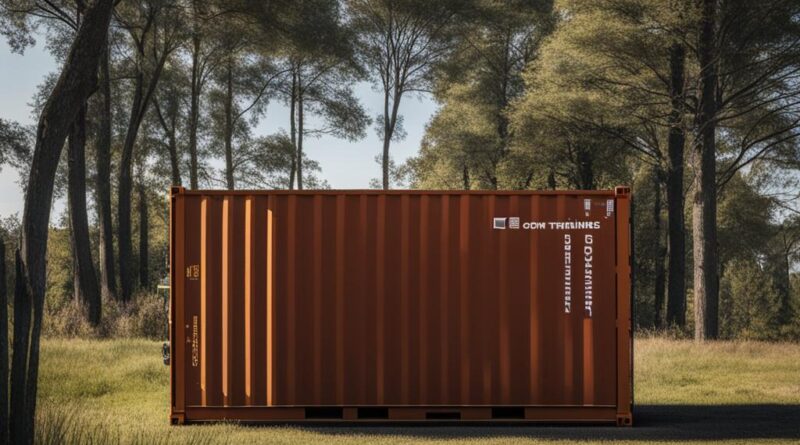Can I Put a Shipping Container on My Property? Find Out Here.
In most cases, you can place a shipping container on your property, but there are regulations and guidelines you need to follow. Building codes and zoning laws vary by state and municipality, so it’s important to check with your local county authorities. Factors such as the purpose of use (storage, permanent home, rental), container size, and temporary vs. permanent structure will impact the permit requirements. Zoning laws and permits are in place to ensure safety and adherence to building standards.
Key Takeaways:
- Placing a shipping container on your property is generally allowed, but regulations and guidelines must be followed.
- Building codes and zoning laws vary by state and municipality, so it’s important to check with local authorities.
- The purpose of use, container size, and structure type will determine the permit requirements.
- Zoning laws and permits are in place to ensure safety and adherence to building standards.
- Consulting with professionals and staying updated on regulations will help ensure a smooth process for container placement.
Do I Need a Permit for a Shipping Container?
When it comes to placing a shipping container on your property, one important question that arises is whether or not you need a permit. In most cases, the answer is yes. Obtaining a permit is crucial to ensure that you comply with the necessary regulations and guidelines. The specific requirements for a shipping container permit may vary depending on factors such as the container construction, location, and purpose of use.
The International Building Code (IBC) governs the permit requirements for shipping containers. The type of permit needed will depend on whether the container is being used temporarily or as a permanent structure. Temporary use permits are generally easier to obtain compared to permits for permanent container structures. Additionally, factors such as traffic density, presence of a homeowner’s association (HOA), and container size can also impact the permit requirements.
It is essential to understand that every state and municipality may have its own set of rules and regulations regarding shipping container permits. This means that it is crucial to check with your local county authorities to ensure compliance with the specific requirements in your area.
Table: Shipping Container Permit Requirements
| Requirement | Temporary Use Permits | Permanent Structure Permits |
|---|---|---|
| Container Construction | Less stringent requirements | Compliance with building codes |
| Location | May have limitations based on zoning laws | Compliance with setback requirements and zoning laws |
| Size | May have limitations based on local regulations | Compliance with size restrictions |
| HOA Regulations | May have additional restrictions | Compliance with HOA rules, if applicable |
It is crucial to obtain a permit for placing a shipping container on your property to ensure compliance with regulations and to avoid potential legal issues. Contact your local county authorities to understand the specific requirements and guidelines for obtaining a permit in your area.
Understanding Zoning Laws for Shipping Containers
When considering placing a shipping container on your residential property, it’s crucial to understand the zoning laws that apply. Zoning laws dictate how land can be used in a specific area, including regulations for container placement. These laws vary by city and municipality, so it’s important to consult with your local government or zoning department to ensure compliance.
In some cities, temporary use of shipping containers for certain purposes may be allowed without a permit. However, other areas may require permits for all container placements, regardless of the intended use. Additionally, homeowner’s associations (HOAs) may have their own restrictions on container placement, so it’s important to review any HOA rules and regulations that apply to your property.
By understanding and following the zoning laws and regulations related to shipping containers, you can ensure that your container placement is compliant and avoid any potential legal issues.
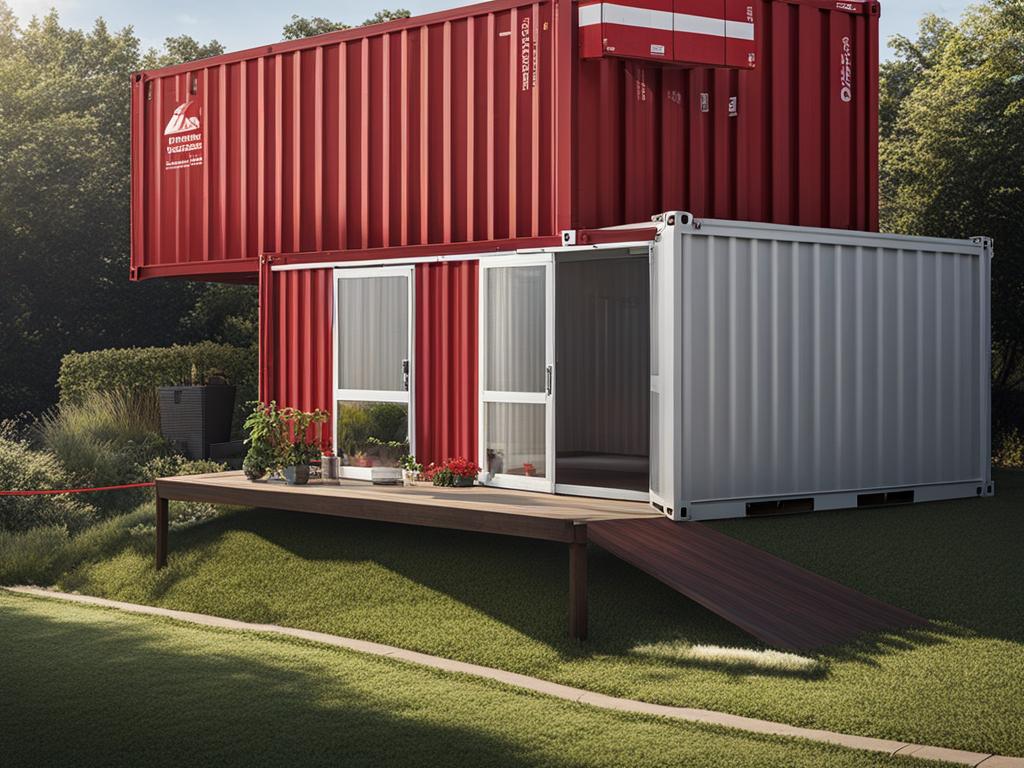
Navigating Building Codes for Shipping Containers
When it comes to placing shipping containers on your property, understanding and navigating building codes is crucial. Building codes vary across states and cities in the United States, but they generally derive from the International Residential Code (IRC) and International Building Code (IBC). It’s important to stay updated on the latest regulations in your area and consult with local architects or contractors to ensure compliance with building code requirements.
Container homes built on permanent foundations typically need to comply with building codes, as they are considered permanent structures. This involves meeting requirements for structural soundness, fire safety, plumbing, electrical systems, and insulation, among others. On the other hand, storage containers that are not intended for permanent habitation may have different requirements, but it’s still important to check with local authorities for any specific regulations.
Consulting with professionals can help ensure that your shipping container structure meets all necessary building code requirements. Architects or contractors experienced in container construction can provide valuable guidance on design, materials, and construction techniques to ensure compliance and safety.
| Building Code Compliance | Zoning Law Adherence | Shipping Container Regulations |
|---|---|---|
| Complying with building codes is essential to ensure safety and structural integrity. | Adhering to zoning laws is necessary to determine the allowable uses and restrictions for shipping containers on your property. | Shipping container regulations encompass a range of requirements, from structural soundness to electrical and plumbing systems. |
| – Meeting structural requirements | – Understanding residential and commercial zoning regulations | – Compliance with building code standards |
| – Fire safety and hazard prevention | – Adherence to setback requirements | – Proper insulation and ventilation |
| – Plumbing and electrical system compliance | – Compliance with screening or fencing requirements | – Meeting safety and accessibility standards |
In summary, compliance with building codes is essential when placing a shipping container on your property. Building codes dictate the safety and structural requirements that must be met, ensuring the well-being of occupants and the longevity of the structure. By understanding and abiding by building code regulations, you can navigate the process of placing a shipping container on your property with confidence.
Deed Restrictions and HOA Rules for Shipping Containers
When considering placing a shipping container on your property, it’s important to be aware of any deed restrictions and homeowner’s association (HOA) rules that may apply. These restrictions and rules are put in place to maintain the aesthetic appeal of the neighborhood and protect property values.
“Deed restrictions are specific rules outlined by the original land developer to maintain a uniform appearance and protect property values within a neighborhood.”
Deed restrictions typically govern various aspects of property use, including the type of structures that are allowed. Some deed restrictions explicitly prohibit the placement of shipping containers, while others may have specific guidelines and requirements in terms of container size, placement, and appearance. Violation of these restrictions can result in fines or legal action.
Similarly, homeowner’s associations often have their own set of rules and regulations regarding shipping container placement. These rules may be more restrictive than deed restrictions, and it’s essential to review the HOA’s bylaws and regulations before proceeding with container placement. It’s also worth noting that HOA rules can be changed through a vote, while deed restrictions generally require a court order for removal.
| Deed Restrictions | HOA Rules |
|---|---|
| Specific rules outlined by the original land developer | Rules set by homeowner’s associations |
| Designed to maintain a uniform appearance and protect property values | Designed to maintain neighborhood aesthetics and adherence to guidelines |
| May prohibit or have specific guidelines for container placement | May have more restrictive rules than deed restrictions |
| Violation can result in fines or legal action | Rules can be changed through a vote |
Permits for Storage Containers
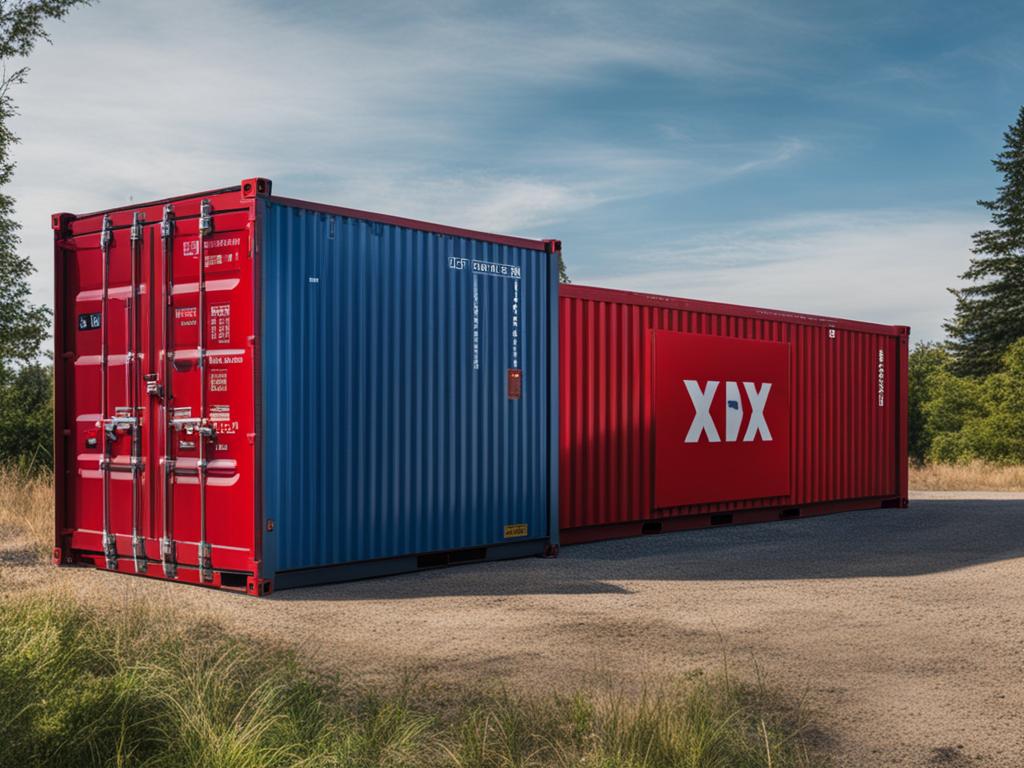
When it comes to using shipping containers for storage purposes, obtaining the necessary permits is essential. The specific requirements for storage container permits can vary depending on your location and local regulations. Factors such as the container’s location on your property, the duration of use, and the impact on the community will determine the permit requirements.
In general, temporary use permits are relatively easier to obtain for storage containers, especially in low-traffic or rural areas. However, it’s important to consult with your local government or permit office to understand the specific regulations and permit requirements in your area.
If you find the process of obtaining permits challenging, you may consider hiring a permit expediter who can help navigate the legal requirements and work with building code officials on your behalf.
Permit Requirements for Storage Containers:
| Requirement | Description |
|---|---|
| Location | Ensure that the container is placed in an approved area on your property according to local zoning laws and regulations. |
| Duration of Use | Specify the intended duration for using the container for storage purposes, whether it’s short-term or long-term. |
| Community Impact | Address any potential concerns raised by neighbors or community members regarding the presence of the storage container. |
| Security Measures | Outline any security measures taken to ensure the safety of the container and its contents, such as locks or surveillance systems. |
By understanding the permit requirements for storage containers and following the necessary steps, you can ensure a smooth and compliant process for utilizing shipping containers for storage purposes on your property.
Container Placement Guidelines for Residential and Commercial Properties
When it comes to placing shipping containers on your property, whether residential or commercial, there are specific guidelines you need to follow. These guidelines are based on zoning laws, municipal codes, and other factors that determine how containers can be utilized in different zones. Let’s take a closer look at the placement guidelines for residential and commercial properties.
Residential Container Guidelines
For residential properties, container placement guidelines generally adhere to the International Residential Code (IRC). The IRC sets standards for safety and construction in residential areas. Depending on your location, you may be allowed a certain number of shipping containers, with specific placement regulations and requirements. Screening or fencing may also be required to maintain the aesthetic appeal of the neighborhood.
Commercial Container Guidelines
On the other hand, commercial properties follow guidelines based on the International Building Code (IBC). These guidelines are more focused on larger-scale commercial projects and take into account factors such as traffic density, setbacks, and other commercial-specific considerations. Each zone may have its own restrictions and requirements for container placement, so it’s important to consult the specific guidelines for your location.
| Residential Properties | Commercial Properties |
|---|---|
| Adhere to International Residential Code (IRC) | Follow International Building Code (IBC) |
| Specific number of containers allowed | Consideration of traffic density |
| Placement regulations and requirements | Setbacks and other commercial-specific considerations |
| Screening or fencing requirements |
Remember, these guidelines can vary based on your location and specific zoning laws. It’s important to consult with your local authorities and professionals such as architects or contractors to ensure compliance with all regulations and requirements. By following the proper container placement guidelines, you can safely and legally utilize shipping containers on your residential or commercial property.
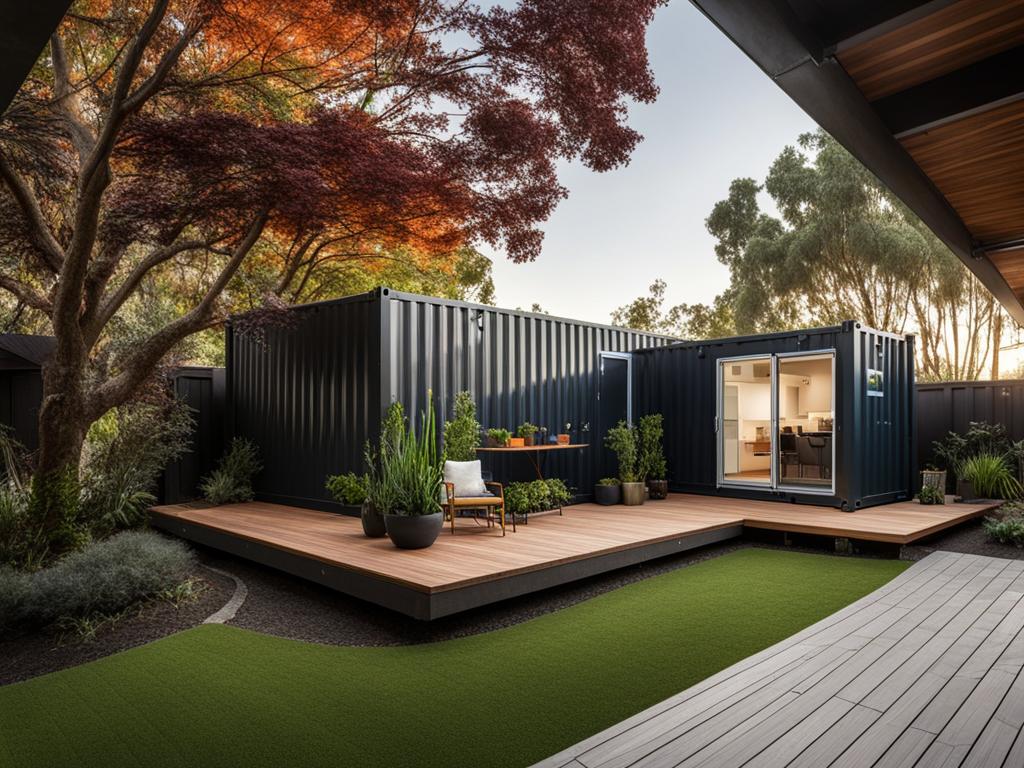
Meeting Building Codes and Zoning Laws
When placing a shipping container on your property, it is essential to comply with building codes and zoning laws to ensure legal and safe placement. Building code compliance is necessary to meet construction and safety standards, while adherence to zoning laws ensures that container placement aligns with the designated land use regulations. By following these regulations, you can avoid penalties, legal issues, and potential safety hazards associated with non-compliance.
Building Code Compliance
Building codes specify the minimum requirements for construction, including the materials used, structural integrity, and safety measures. Compliance with building codes ensures that the shipping container structure is built to withstand environmental loads, such as wind and snow, and meets the necessary safety standards. It is essential to consult the International Building Code (IBC) or your local building code authority to understand the specific requirements for shipping container structures in your area. These guidelines will help you ensure that your container placement complies with the appropriate building regulations.
Zoning Law Adherence
Zoning laws regulate the use of land in specific areas, determining whether properties are designated for residential, commercial, or industrial purposes. The zoning regulations for shipping containers can vary depending on the area and the intended use of the container. It is crucial to review the zoning laws specific to your location to determine if there are any restrictions or requirements for container placement. Understanding these regulations will help you ensure that your container placement aligns with the designated land use and zoning guidelines.
Shipping Container Regulations
In addition to building codes and zoning laws, there may be specific regulations pertaining to shipping containers in your area. These regulations could include requirements for setbacks, screening, or fencing to ensure the visual compatibility of containers with the surrounding properties. It is important to consult the local authorities or planning department to understand any additional regulations that may apply to your container placement. By adhering to these regulations, you can ensure that your container placement complies with all applicable rules and is aesthetically compatible with the surrounding environment.
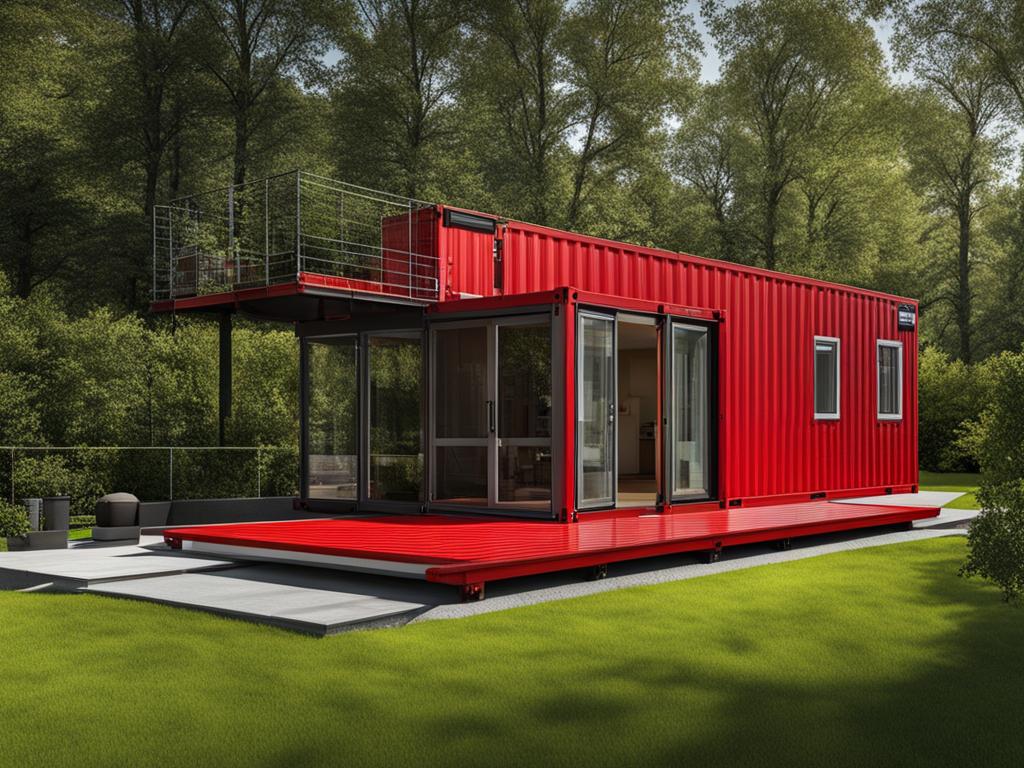
Importance of Structural Soundness for Shipping Containers
When considering the placement of a shipping container on your property, it is crucial to prioritize structural soundness. Ensuring that the container is durable and able to withstand various conditions is essential for its long-term usability and safety.
Before purchasing or placing a shipping container, it is important to thoroughly inspect it for any signs of damage or leaks. Look for rust, dents, or holes that could compromise its structural integrity. Pay close attention to the container’s weather-resistant materials and its ability to withstand wind and snow loads.
Structural durability is particularly important when using shipping containers for various purposes, such as storage or permanent structures. Whether you plan to convert the container into a home or use it for storage, its structural soundness ensures that it can withstand the intended use and protect the contents inside.
Regular inspections and maintenance are also crucial to maintaining the structural integrity of the container. Promptly address any damage or leaks to prevent further deterioration and ensure the longevity of the container structure.
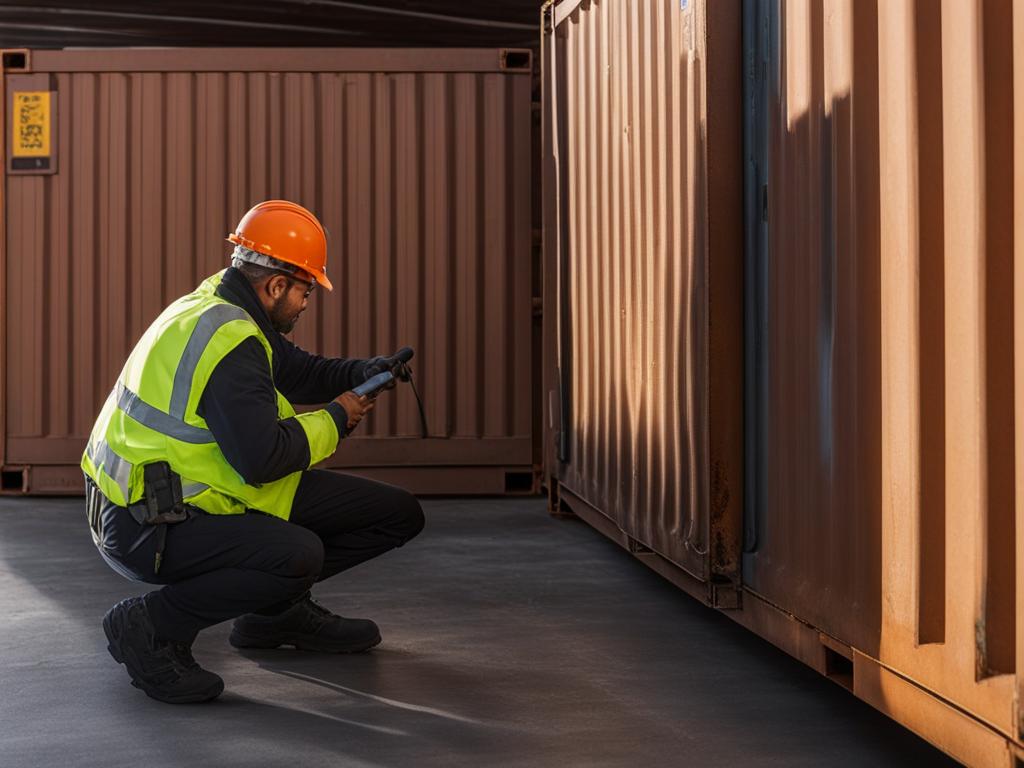
Table: Factors to Consider for Container Structural Requirements
| Factor | Considerations |
|---|---|
| Weather Resistance | Material strength, corrosion resistance, and ability to withstand various weather conditions. |
| Load Capacity | The container’s ability to support its own weight, as well as any additional loads it may carry. |
| Structural Integrity | Inspecting for any damage, including dents, rust, or holes that may compromise the container’s structural soundness. |
| Leakproofing | Ensuring that the container is sealed properly to prevent water or moisture ingress. |
| Longevity | Consider the expected lifespan of the container and its ability to withstand wear and tear over time. |
“When placing a shipping container on your property, it’s essential to prioritize its structural soundness. Thoroughly inspect the container for any signs of damage or leaks before purchasing or placing it on your property. Regular inspections and maintenance are crucial for ensuring the container’s long-term durability and safety.” – Container Expert
The Permit Acquisition Process for Shipping Containers
Obtaining the necessary permits for placing a shipping container on your property is an important step in ensuring compliance with building codes and zoning laws. The permit acquisition process can vary depending on your location, but generally involves a few key steps.
First, you will need to fill out an application form provided by your local county authorities or building department. This form typically asks for details such as the size of the container, the purpose of use, and information about the property where the container will be placed. Be sure to provide accurate and complete information to avoid delays in the permit process.
Along with the application form, you may be required to provide architectural drawings or site maps that clearly show the proposed location of the container on your property. These documents help the building department assess the impact of the container on the surrounding environment and ensure that it meets setback requirements and other regulations.
In some cases, you may also need to pay a fee for the permit application. The fee amount can vary depending on the municipality and the specific requirements for container placement. Once your application is submitted, the building department will review it and assess whether it meets all the necessary criteria. The timeline for permit approval can range from a few business days to a few weeks, so it’s important to start the process well in advance of your planned container placement to avoid any legal issues.
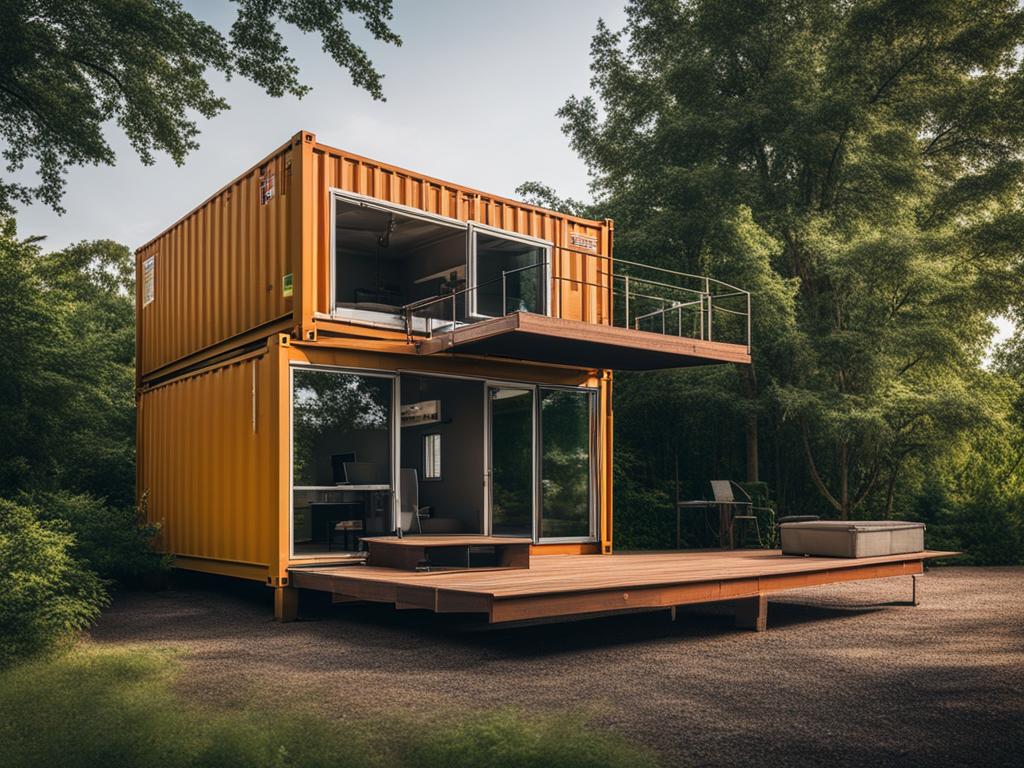
Tips for Safely Storing a Shipping Container on Your Property
When it comes to storing a shipping container on your property, safety should be a top priority. Here are some important tips to keep in mind:
- Choose a level spot: Select a flat, even surface for the container placement. This will ensure stability and prevent any potential shifts or accidents.
- Avoid hazards: Keep the container away from trees, power lines, or any other potential danger zones. This will minimize the risk of damage or accidents caused by falling objects or interference with electrical lines.
- Prepare the surface: If possible, prepare the ground before placing the container. Concrete or asphalt can provide a solid foundation, enhancing stability and durability.
- Level the container: To prevent sinking or tilting, use blocks or supports to keep the container level. This will help maintain its structural integrity and make it easier to access when needed.
- Secure openings: Ensure all doors and openings of the container are properly secured. This will prevent unauthorized access and protect the contents from theft or damage caused by weather elements.
Regular inspection is also crucial to ensure the container’s integrity. Check for signs of damage, leaks, or rust, and address any issues promptly. By following these safety tips, you can ensure a secure and reliable storage solution on your property.
“Choosing a level spot and properly securing the container are essential steps in enhancing safety and preventing accidents.”
Example of a Shipping Container Storage Plan
| Step | Action |
|---|---|
| 1 | Clear the area of any potential hazards. |
| 2 | Prepare the surface by leveling and using concrete or asphalt if desired. |
| 3 | Place blocks or supports at strategic points to ensure the container remains level. |
| 4 | Position the container securely on the prepared surface. |
| 5 | Secure all doors and openings to prevent unauthorized access. |
| 6 | Regularly inspect the container for any signs of damage, leaks, or rust. |
Implementing these steps will help you create a safe and reliable storage solution with your shipping container. Remember to adhere to local regulations and guidelines to ensure compliance with building codes and zoning laws.
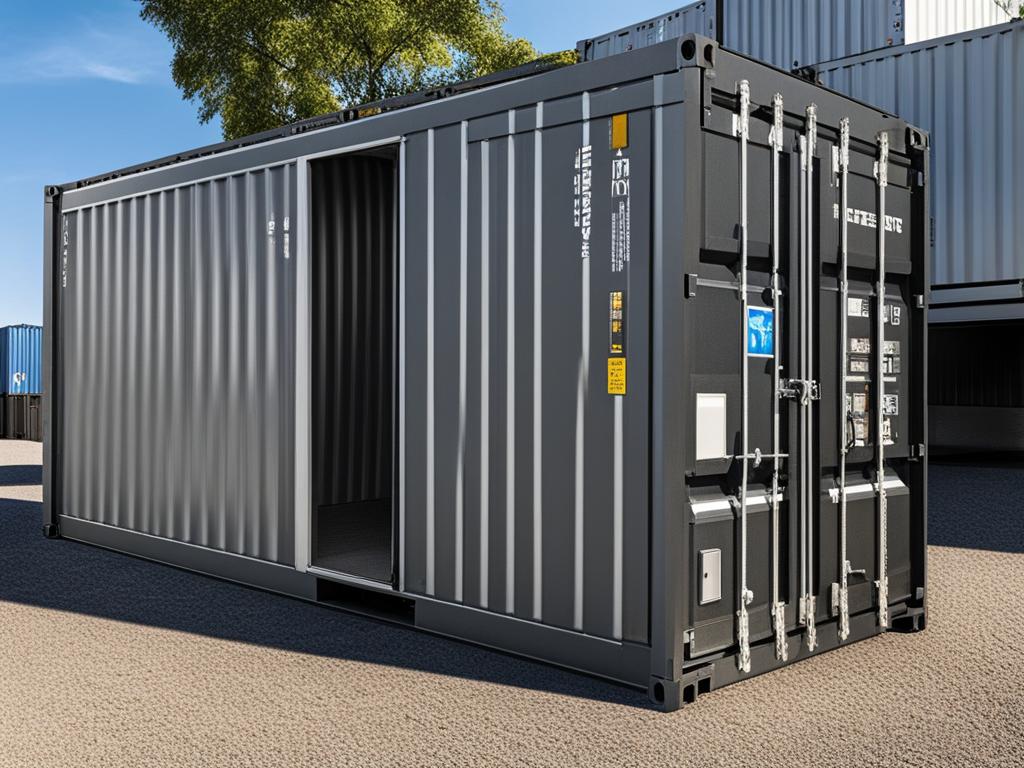
Conclusion
Placing a shipping container on your property requires careful consideration and adherence to regulations. Building codes, zoning laws, and specific guidelines vary by state, city, and location. To ensure a smooth process, it’s crucial to obtain the necessary permits, follow setback requirements, and comply with any additional rules set by homeowner’s associations or deed restrictions.
Consulting with professionals such as architects or contractors can provide guidance on meeting building codes and zoning laws. Staying updated on the latest regulations in your area is essential to avoid any legal issues.
Safety, durability, and intended use should be considered when making decisions about container placement. Regular inspections for structural integrity and addressing any repairs promptly will help ensure the longevity and functionality of the container structure.
By following the appropriate regulations and guidelines, you can successfully place a shipping container on your property, whether for storage or as a permanent structure. Remember to always prioritize safety and compliance to enjoy the benefits of utilizing shipping containers in your property.
FAQ
Can I put a shipping container on my property?
In most cases, you can place a shipping container on your property, but there are regulations and guidelines you need to follow. Building codes and zoning laws vary by state and municipality, so it’s important to check with your local county authorities.
Do I need a permit for a shipping container?
Yes, in most cases, you will need a permit to put a shipping container on your property. The type of permit will depend on whether the container construction is temporary or permanent.
What are the zoning laws for shipping containers?
Zoning laws dictate how land can be used in a specific area. Residential, commercial, and industrial zones have different regulations regarding shipping containers. It’s important to check with your municipal government and homeowner’s association (HOA) to understand the specific zoning regulations for shipping containers that apply to your property.
What building codes apply to shipping containers?
Building codes vary across states and cities in the United States. Most building codes are derived from the International Residential Code (IRC) and International Building Code (IBC). It’s important to stay updated on the latest regulations in your area and consult with local architects or contractors for guidance.
What are deed restrictions and HOA rules for shipping containers?
Deed restrictions, also known as restrictive covenants, are specific rules outlined by the original land developer to maintain a uniform appearance and protect property values within a neighborhood. Homeowner’s associations (HOAs) enforce these deed restrictions and may have additional rules regarding shipping containers. It’s important to review your deed and consult with a lawyer knowledgeable in real estate transactions to understand any restrictions on container placement.
What permits are required for storage containers?
Different rules apply for using shipping containers for storage purposes. The specific regulations and permit requirements will vary by state and city. It may be beneficial to hire a permit expediter to navigate the legal requirements and building code officials.
What are the guidelines for placing shipping containers on residential vs. commercial property?
The guidelines for placing shipping containers on residential and commercial properties differ based on zoning, municipal codes, and other factors. It’s important to consult the specific guidelines for your location to determine how many containers are allowed, placement regulations, and any screening or fencing requirements.
How do I meet building codes and zoning laws for shipping containers?
To put a shipping container on your property, you need to comply with building codes and zoning laws. It’s essential to stay updated on the latest regulations in your area and consult with professionals such as architects or contractors for guidance.
What is the importance of structural soundness for shipping containers?
Before placing a shipping container on your property, it’s crucial to ensure that it is structurally sound. Thoroughly inspect the container for any signs of damage or leaks before purchasing or placing it on your property. Structural integrity is key to ensuring the safety and longevity of the container structure.
What is the permit acquisition process for shipping containers?
The process for obtaining permits for shipping containers can vary depending on your location. Generally, it involves filling out an application form, providing architectural drawings or site maps, answering questions about the container size and purpose of use, and paying a fee, if applicable.
What are some tips for safely storing a shipping container on my property?
When storing a shipping container on your property, it’s important to choose a level, hazard-free spot away from trees, power lines, and other potential dangers. Prepare the surface with concrete or asphalt to ensure stability. Regularly inspect the container for damage or leaks and make necessary repairs promptly.

